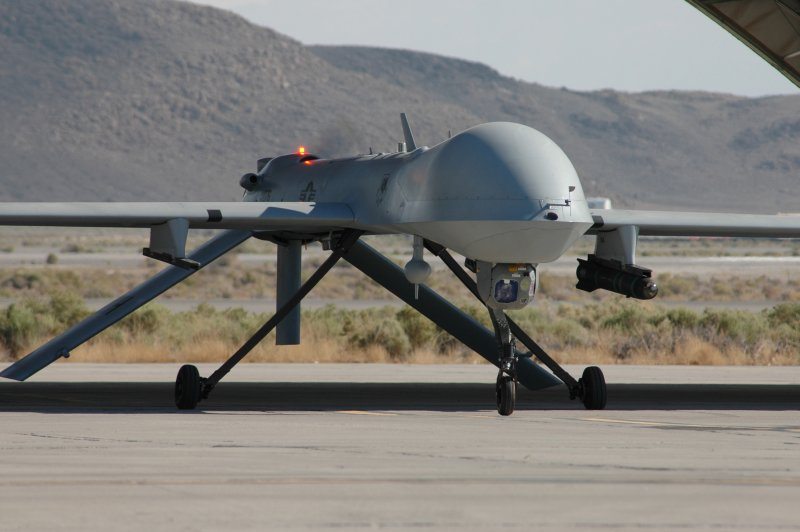RAMSTEIN AIR BASE, Germany — Two MQ-1 Predator remotely piloted aircraft (RPAs) and approximately 70 Airmen deployed to Lielvarde Air Base, Latvia to test the unit’s ability to forward deploy, and to conduct air operations while assuring NATO allies of our commitment to regional security and stability.
Airmen and aircraft from the 147th Reconnaissance Wing of the Texas Air National Guard based in Ellington Field in Houston, Texas, began arriving in Latvia Aug. 24. This temporary deployment of aircraft and personnel will continue through mid-September.
“The big win is being able to rapidly deploy, setup shop, fly and exercise all of the agreements, arrangements and relationships that went into making this happen. It validates basing and airspace arrangements, operations and host-nation agreements in a very real way,” said Lt. Col. Christopher Recker from the operations directorate at U.S. Air Forces in Europe and Air Forces Africa Headquarters.
“This will test mobility, maintenance and logisticians arranging airlift,” he said. “Personnel have to make decisions about bandwidth, satellite communication, frequency allocation and frequency clearing.”
Once validated, this model may be used as a responsive and flexible option for operations in the future.
“This is not a one-time operating zone. We created an airspace arrangement that is enduring, so when we need to go back, it will be available,” said Recker.
Another portion of this deployment is intelligence training. It is based on a platform called the European Partner Integration Enterprise (EPIE) which provides a mechanism for sharing intelligence information with coalition allies and partners.
Two intelligence officers from Poland and each of the Baltic nations of Latvia, Lithuania, and Estonia were invited to participate.
“While the crew is flying in Latvia, we will sit shoulder-to-shoulder with our Baltic allies and teach them how we go through full-motion video processing,” said Lt. Col. Anthony Bellione, USAFE-AFAFRICA commander’s action group chief.
Although the deployment is not gathering intelligence information for operational use, it tests the ability to share intelligence information, and tests the capabilities of the secure-NATO pipeline used to disseminate intelligence products.
“The intent is to reassure our allies, by showing them a different capability set. This is the intelligence component that deepens our commitment with our NATO partners in the region,” said Bellione.
The squadron will also conduct partner familiarization on RPA operations.
“Utilizing a satellite data link, the squadron will familiarize our Latvian allies on long-range flights so participants understand the opportunities and challenges of RPA operations,” Recker said. “Additionally, there are plans for NATO joint terminal attack controllers to receive training calling in airstrikes in coordination with A-10 Thunderbolt IIs and information received from MQ-1s.”
During operations, air controllers coordinate airspace traffic based on host-nation agreements to ensure safe operations.
“The Predator will operate in positively controlled airspace. Everyone in that airspace is participating, which means all aircraft are in voice and radar contact with controllers, taking vectors, climbing and descending,” said Bellione. “U.S. Air Force pilots are at the controls actively flying the airplane every moment of the flight.”
“This is a weapons system that enables the most powerful aspects of the warfighting cycle. It enables information to be distributed to decision makers, and allows tactical pause when necessary to make smart decisions. All of that saves lives, saves resources and influences a lot of decisions,” said Recker.
This deployment is funded by the European Reassurance Initiative which demonstrates America’s solemn commitment to reinforce the safety and territorial integrity of our allies and partners, in addition to strengthening the security and capacity of allies and partners in the region.
Through these strengthened relationships and engagements, the U.S. alongside European allies and partners, train to meet future security challenges and demonstrate a shared commitment to a safe and secure Europe.









